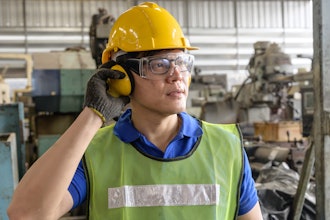
Maintaining proper footwear hygiene is a critical component of any food safety program within a processing facility. Inadequate footwear sanitation can lead to the spread of harmful pathogens like Listeria and Salmonella, posing a significant risk to consumer safety. While various methods exist for dry footwear sanitation, not all are created equal.
In this article, we will explore one common method, Dry Quat, and introduce the benefits of CleanTech with Sole Clean.
Key Criteria for Effective Dry Shoe Sanitation Solutions
For footwear sanitation solutions to be truly effective, they must meet three key criteria. Firstly, it should have an efficacy that can be regularly validated to ensure its reliability in removing pathogens. Clinical validation that mimics the steps of dry footwear sanitation at a facility in real life presents a significant challenge, as no other company has undertaken this crucial step. Meritech recognized this gap and took the initiative to conduct comprehensive testing. Unlike simple lab tests, the company accounted for real-world conditions, understanding that a test tube environment is vastly different from the bottom of footwear. (Results discussed later).
Secondly, the method should be consistent across individuals, shifts, and facilities, ensuring uniform sanitation practices. Consistency ensures that everyone receives the same level of sanitation every single time, regardless of the time of day or the employee on duty.
Lastly, it should be strategically located to prevent pathogens from entering production and other critical areas, such as from raw to Ready-to-Eat (RTE) areas. This includes not only entrance to production areas from primary hygiene zones, but also transition areas and other entrances, such as back doors, which are often overlooked but can be significant sources of contamination.
Challenges of Dry Quat for Footwear Sanitation in Food Manufacturing
Dry Quat, a popular method for dry footwear sanitation, presents several challenges. One of the critical issues is contact time; how long does one have to stand on Dry Quat to have any impact on pathogens like Salmonella? Moreover, introducing moisture, which is necessary for Dry Quat to be effective, is precisely what many facilities are trying to avoid. Additionally, Dry Quat pellets can easily travel throughout a facility, leading to contamination in various areas. Moreover, the moisture introduced by Dry Quat can be corrosive on equipment, posing a danger to food safety. In the event of spills or accidents on the production line, the corrosive nature of Dry Quat can further jeopardize food safety standards.
Exploring Alternative Footwear Sanitizing Methods
While Dry Quat is one of the popular methods for dry footwear sanitation, there are alternatives such as UV sanitation, plastic disposable shoe covers, tacky mats, and Sole Clean. Shoe covers or booties offer an easy-to-use solution for footwear sanitation. However, they have several drawbacks, including their inability to remove pathogens effectively, the generation of significant plastic waste, and the potential hazard of making shoes slippery. Tacky mats can be used with all types of footwear, but they only remove small particles and debris. Additionally, they need frequent replacement, resulting in increased costs. UV sanitation systems offer an alternative to chemical-based methods. However, they can be time-consuming and lack extensive real-life testing, raising questions about their efficacy.
CleanTech EVO with Sole Clean Footwear Sanitizing Pan
The Sole Clean footwear sanitizing pan offers a superior alternative to Dry Quat and other dry sanitation methods. This system has been extensively researched and proven to remove more than 99.9% of pathogens from footwear in just 12 seconds.
Designed to provide an efficient and effective solution for dry footwear sanitation in food processing facilities, Sole Clean utilizes a quick-drying alcohol and quat-based sanitizer, ensuring rapid and thorough sanitation of footwear. With its proven ability to remove more than 99.9% of pathogens, it offers a high level of cleanliness and hygiene. Ideal for dry and semi-dry facilities, Sole Clean is specifically designed to meet the footwear sanitation needs of environments without the need for a floor drain.
The system features a customizable auto-start feature, allowing for easy adaptation to the specific requirements of each facility. This ensures that everyone, from the first person of the morning shift and throughout the day receives the same consistent and reliable footwear sanitation. In addition, the space-saving design of Sole Clean combines footwear cleaning and handwashing into one compact station. This not only saves space but also streamlines the sanitation process, making it more efficient and convenient for everyone with minimal training needed. Furthermore, Sole Clean is compliant with food safety standards and regulations, providing peace of mind regarding food safety protocols. Its adherence to these standards ensures that facilities can maintain the highest level of cleanliness and hygiene.

Validation and Testing of Dry Footwear Sanitizing Methods
The Sole Clean has undergone rigorous testing to validate its efficacy. Third-party testing conducted by a GLP laboratory demonstrated a mean average percentage reduction of 99.994% for both Listeria and Salmonella. These results stem from lab testing that simulated a real-world scenario, utilizing actual footwear including rubber boots and other popular slip-resistant comfortable footwear commonly used in food processing facilities. By testing with a variety of footwear types, Meritech ensured that the results accurately represented real-world conditions in a food plant. Subjects with two types of contaminated footwear stepped both feet into a CleanTech footwear enhancement pan of the Sanifect D2 solution for 12 seconds The results demonstrate a mean average percentage reduction of 99.994%, showcasing the system's remarkable effectiveness in removing harmful pathogens. These results highlight the effectiveness of the system in real-world scenarios.

Your Facility: Method and Location
Selecting the appropriate method and location for footwear sanitation in your facility is crucial for maintaining food safety standards. Sole Clean offers an innovative solution that goes beyond traditional footwear sanitation methods. By enhancing hand-washing stations, Sole Clean ensures a comprehensive hygiene protocol. It can be equipped with controlled-access turnstiles at facility entrances, ensuring that employees follow the necessary 12-second automated handwash and contact time with the footwear sanitizing chemical before entering the production area. By combining footwear cleaning and handwashing into one station, The CleanTech Automated Handwashing Station with Sole Clean streamlines the sanitation process, ensuring that employees receive consistent and effective hand and footwear sanitation every time they enter the facility’s production areas.
A Superior Solution for Footwear Sanitation
Effective footwear sanitation is essential for ensuring food safety within processing facilities. While Dry Quat and other methods have their limitations, Sole Clean offers a superior solution. With its proven efficacy, quick operation, and compliance with food safety standards, it provides a reliable and efficient way to remove harmful pathogens from footwear, reducing the risk of contamination and ensuring consumer safety.
Will Eaton is the vice president of sales and marketing at Meritech.






















